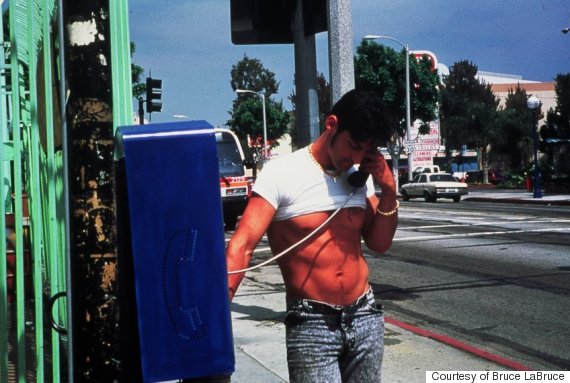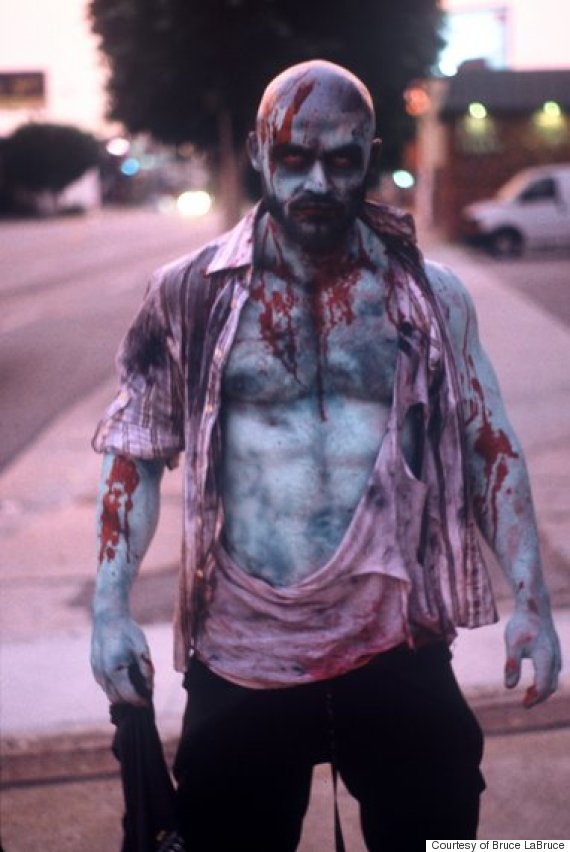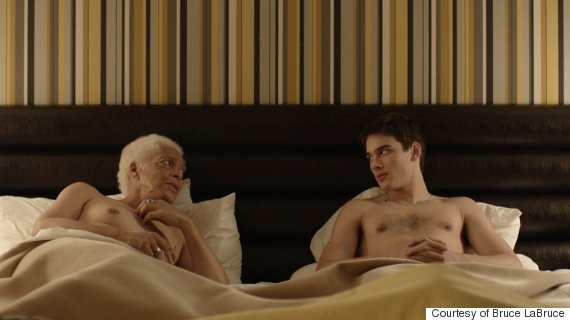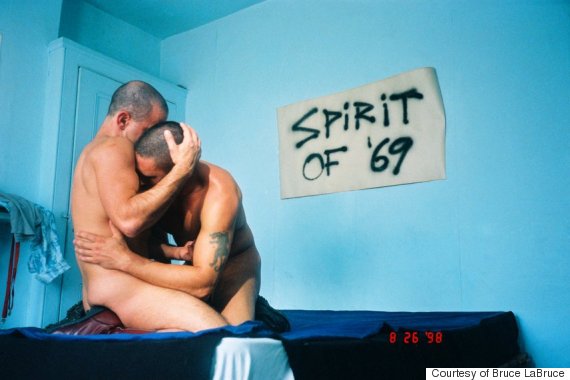Bruce LaBruce is one of the most iconic names within the world of queer film. Now the artist is being honored with his very own retrospective at New York City's Museum of Modern Art, which recognizes his work as a whole from over the past several decades.
Having opened on April 23, the retrospective showcases all nine of the films LaBruce has made as he reaches what he describes as a "mid-point" in his career. The exhibition is also features LaBruce's latest film "Gerontophilia," a project that explores intergenerational queer love.
The Huffington Post chatted with LaBruce this week about what the retrospective means for his career and what we can expect from the filmmaker in the future.

The Huffington Post: What is your overarching vision for this exhibition at the MoMA?
Bruce LaBruce: The film exhibition at MoMA is a retrospective, so it's an opportunity to look back at my work at a more or less "mid-career" point and ponder how I got this far making the kinds of films that I make. The exhibition corresponds with the US theatrical debut of my film "Gerontophilia," which opens May 1st at the Village Cinema East in NYC, and with the recent release on Blu-ray of my movie "Hustler White" for its 20th anniversary. MoMA is showing all nine of my feature-length films and a program of my short films.
I started out making short, experimental super 8 films in Toronto in the mid-80s, showing them in alternative art spaces and punk venues. My first no-budget feature, "No Skin Off My Ass," was shot on super 8 and blown up to 16mm. My next two films where shot on 16mm, and then I transferred to digital but still incorporated some material shot on film. My latest features, including "Gerontophilia" and "Pierrot Lunaire," have been shot entirely on HD digital. So my work has bridged the gap between film and video, which has had interesting implications in terms of aesthetics and process.

I also started making fanzines and films before the Internet popularly existed, and I promoted and exhibited much of my early work myself. I considered promotion and distribution part of the creative process, and still do to this day. And in terms of queer politics, I was one of the first filmmakers to be showing sexually explicit and even pornographic gay imagery in films that were playing at major international film festivals (four of my films have played at Sundance and three as world premieres). So it seems like a good time to reflect back on that trajectory, and figure out where I'm headed now.
As an artist, what does this moment in your career represent for you?
Although I've always shown my work at more "queer" and alternative venues and festivals, I've also avoided only preaching to the perverted, and have tried to reach broader audiences, even with very provocative and (homo)sexually explicit work. So to be shown and recognized by MoMA is a great way to give my work more visibility, and to put it in a larger context of the gay movement and the avant-garde. The MoMA film department is also talking to me about including my films as part of their permanent collection, so it's a good opportunity for me to have my work properly archived. I've made mostly no- and low-budget films, so there have been very few restrictions on my imagination as a filmmaker. I've been allowed to do pretty much whatever I want, without interference, which has encouraged me to really push the envelope and explore some unchartered territory. So it's great to see MoMA supporting this kind of work.

What are your thoughts about the possibility of viewers truly getting an accurate sense of who you are as an artist by experiencing this exhibition?
The MoMA retrospective is presenting all of my movies, even the most controversial ones. My film "Skin Flick," an art-porn film that takes as its subject a gang of neo-Nazi skinheads, was my first film to be picketed when it played a three-week run at the ICA in London. "L.A. Zombie," a gorn movie (mixing gore and porn) was banned in Australia and caused a ruckus when it was screening in competition at the Locarno Film Festival. So I'm happy that MoMA is not shying away from showing these films as well, because they really do give the full picture of my work. "Gerontophilia," which opens the retrospective, is my first and only non-sexually explicit feature film to date!

What's next for Bruce LaBruce?
I'm hoping to continue to make more of both kinds of films, both no-budget and experimental, and more mainstream. I have three projects in development. One is unannounced, one is called "Twincest," which is a feature film without sexually explicit content, and one is a no-budget sequel of sorts to "The Raspberry Reich" entitled "Ulrike's Brain." Hopefully there will also be more photography, more writing, and more controversies!
The Bruce LaBruce MoMA retrospective is running through May 2. Head here for more information.
